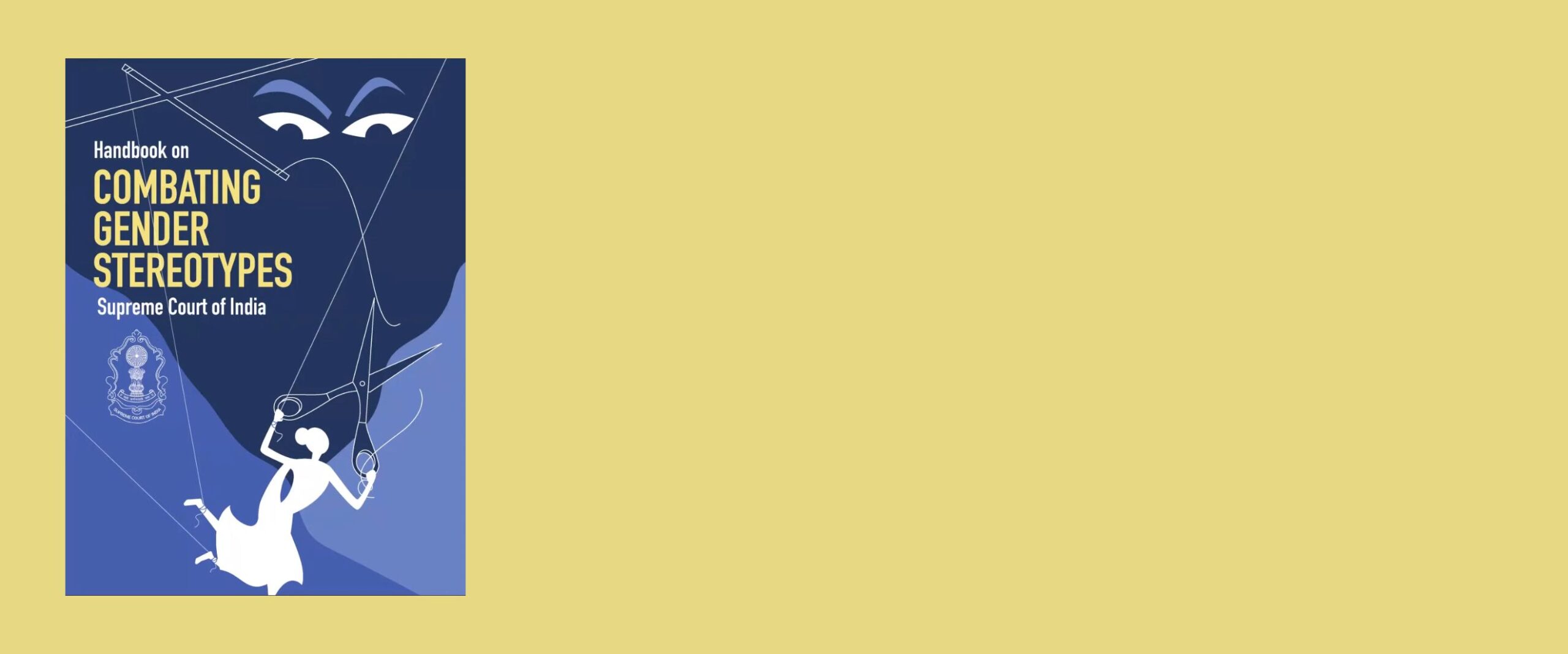Analysis
Supreme Court handbook on gender stereotypes: Progressive, but will the law catch up?
A new publication from the apex court acknowledges that ‘stereotypical language’ reinforces ideas contrary to constitutional ethos

When it comes to a woman’s behaviour, a feeble “no” may mean “yes”, the Delhi High Court had shockingly observed in 2017, while deciding Mahmood Farooqui v State (Govt of NCT of Delhi). In the Supreme Court’s Handbook on Combating Gender Stereotypes, released by Chief Justice of India D.Y. Chandrachud on 16 August, the language in Farooqui is cited as endorsing the kind of harmful stereotypes that courts should avoid while drafting decisions.
The 30-page publication, addressed to judges and the legal community, aims to ‘actively challenge and dispel harmful stereotypes on the basis of gender.’ It recognises that stereotypes ‘inhibit the transformative project of the law and the Constitution’. Using words like ‘ravished’ instead of ‘raped’ is inappropriate, the handbook points out. It singles out words that carry a misplaced sense of moral censure: words like ‘easy’, ‘fallen’, ‘slut.’
The publication also calls out outdated investigative and evidential approaches. These include: an expectation of physical struggle to establish a lack of consent; reliance on immediate reporting of violence; over indexing on a victim’s drinking habits or dressing choices. Feminists have long critiqued the role these stereotypes play in creating the narrative of a ‘perfect victim’.
Jhuma Sen, a co-convenor of the Indian Feminist Judgements Project, is one of the contributors to the handbook. The IFJP initiative has been treading the path of gender sensitivity innovatively, by producing scholarship premised on a critical and feminist reading of judgements.
The Supreme Court’s handbook is meant to function as a ready-reckoner and guide for busy legal professionals. “A guide, especially when it is coming from a credible place like the Supreme Court, can be a great starting point for lawyers and judges who are interested in using the right language but working on a lot of issues,” said Ragamalika Karthikeyan, Senior Lead for Audience Revenue and Special Projects at digital publication The News Minute. Karthikeyan has worked on a Media Reference Guide that provides a similar glossary for reporting on queer issues.
Not enough intersectionality
The Supreme Court’s handbook addresses the egregious reasoning in cases like the rape of Bhanwari Devi, where the accused were acquitted on the assumption that dominant caste men would not rape a woman from an oppressed caste. It also reinforces that women from marginalised communities, such as the Scheduled Tribes, are not ‘clueless’ and have equal agency, and that able-bodied men can commit sexual crimes against disabled women. In addition to explicitly discussing the difference between sex and gender, the document addresses harmful language used to describe transgender people. It bats for using ‘assigned male/female at birth’ instead of ‘biological male/female’.
However, a criticism of the handbook is that it doesn’t do enough to integrate the diverse and intersectional experiences of women. The testimony of disabled women, for instance, is often not relied on by investigating officers and courts because they are viewed as passive victims. In cases involving Dalit women, sexual violence is often a ‘punishment’ for challenging caste hierarchies, but courts often assume that sexual violence is separated from other kinds of domination. Similarly, queer women are often subject to horrific practices of corrective rape because of the assumption that women should only be attracted to men or that sexual intercourse can ‘fix’ them.
Though these stereotypes could be addressed in other publications, as they have been for queer people in the Sensitisation Module for the Judiciary on the LGBTQIA+ Community, published in November 2022, reiterating it here would acknowledge that an individual’s gender intersects in complex ways with their other identities.
The law still lags behind
Overall, though, the handbook is a progressive step, and its letter and spirit must inform the interpretative exercise of courts. That’s also because, in a sense, regressive law continues to remain in force in a way that is alarming for proponents of gender-sensitive jurisprudence. Mahmood Farooqui is still precedent for district courts in its jurisdiction. Bhanwari Devi’s rape case was never taken up on appeal and the Vishakha v State of Rajasthan (1997) judgment it inspired failed to address the caste element. In Patan Jamal Vali v State of Andhra Pradesh (2021), the Court explicitly recognised the difficulty in landing on explicit evidence linking sexual violence to caste or disability, but still concluded that the charge under the Scheduled Castes and Scheduled Tribes (Prevention of Atrocities) Act 1989 should be set aside.
The handbook advocates using the descriptor ‘sex worker’ instead of the word ‘prostitute’. But the Immoral Traffic (Prevention) Act 1956—the primary legislation on sex work—uses the word and its variants 36 times. Similarly, it asserts that ‘transgender individuals can be raped’. But only women can allege rape under Section 375 of the Indian Penal Code, 1860. There’s another level of nuance here. While it is established that ‘woman’ includes transgender women, the Transgender Persons (Protection of Rights) Act, 2019 still requires ‘surgery’ for legal recognition as a woman. One more example of the statute not having caught up: non-binary transgender individuals and transgender men have been recognised as ‘one of the groups most vulnerable to sexual violence’ in the handbook, but the maximum sentence for their sexual harassment is only 2 years under the Transgender Persons Act.
Where do the e-Committee’s initiatives fit?
Both the LGBQIA+ Sensitisation Module and the Handbook on Combating Gender Stereotypes were put together by the e-Committee of the Supreme Court. There are some procedural questions worth raising about why the e-Committee is the body that has been given this role, and what that means for who gets to participate in it.
Then, there’s the matter of binding value. To what extent, for instance, is the district judiciary meant to engage with the e-Committee’s modules and handbooks while deciding matters? If standards are being set by the administrative side of the Supreme Court, what is their judicial value? Aspects of the handbook that deal with the substantive law could do with some clarity from the apex court on its judicial side.
There are also some aspects of the handbook that are not strictly legal questions. “Some things can be enforced as rules, but some should remain a suggestion,” Karthikeyan said, “Language is evolving and even the terms we use today may not be the terms used 10 years later so what should and shouldn’t be codified is still a conversation.”
By now, it’s clear that there is a direct link between progress on the judicial and administrative sides of the ecosystem. In NALSA v Union of India (2014) and Navtej Singh Johar v Union of India (2018), the Supreme Court recognised the need for sensitisation of various groups on LGBTQIA+ issues. In Aparna Bhat v State of Madhya Pradesh (2021), the Court mandated gender-sensitive training to be a part of modules for the National Judicial Academy, the Judicial Services Examination and the All India Bar Examination. The 2022 sensitisation module could be seen as supporting and advancing those rulings.
Now, it remains to be seen whether progress also runs the other way: can the emphatic guidelines emerging from the administrative side of the Supreme Court lead to comprehensive changes in statutory language and judicial interpretation?


